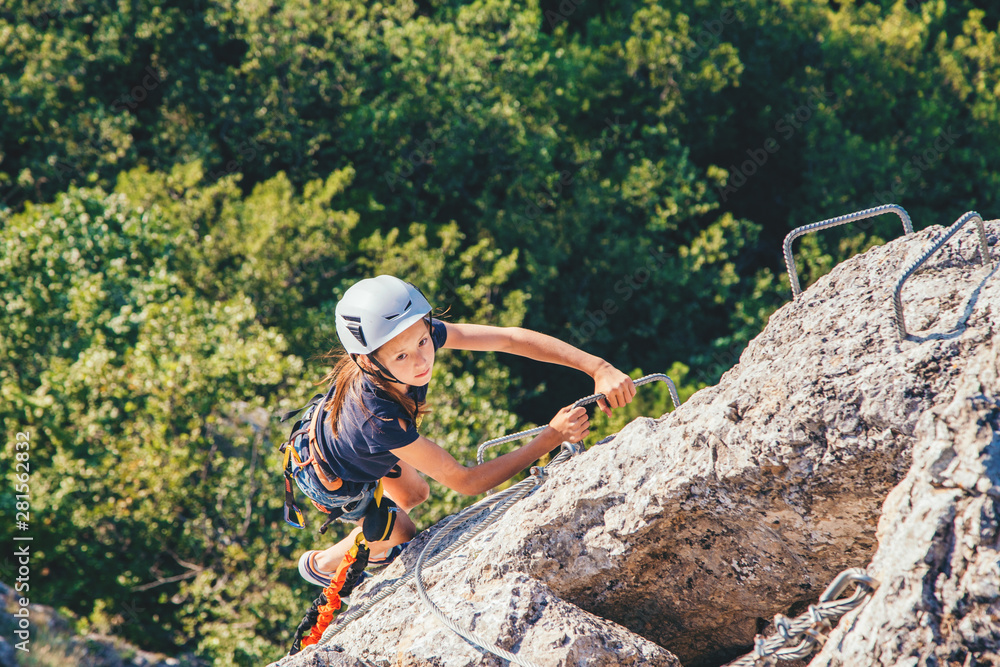A thrilling adventure: The Via Ferrata of Castelo de Vide.
In the rolling hills of Portugal’s Alentejo region lies Castelo de Vide, a medieval town steeped in charm and in the shadows of the São Mamede Mountains. Known for its cobbled streets, Jewish quarter, and castle ruins, this hilltop town is now drawing a new wave of visitors—not just for its history, but for the vertical adventure that awaits just outside its walls.
Welcome to the Via Ferrata de Castelo de Vide—Portugal’s first illuminated via ferrata and one of the most scenic and accessible fixed climbing routes in the country.

Where Old Stone Meets Steel Cable
Castelo de Vide sits on the edge of Parque Natural da Serra de São Mamede. It is a protected area of oak forests, granite outcrops, and soaring vultures. It’s here, carved into the cliffs just above town, that the via ferrata route has been cleverly installed. Far from disturbing the medieval vibe, the route feels like a natural extension of the terrain—giving climbers a chance to scale ancient stone with views over red-tiled rooftops, olive groves, and the vast plains of the Alentejo.
The via ferrata officially opened in 2021 and was designed to blend tourism, outdoor sport, and heritage in a low-impact, high-thrill package. And it succeeds brilliantly.
Click here to read about another fabulous Via Ferrata adventure.
The Route: Steel, Sky, and Scenic Views
The route starts just below the castle, and from the first step onto the iron rungs, you’re hit with panoramic views over the valley. The ferrata follows a natural rock line that winds and rises along the ridge, using a mix of cables, staples, and foot bars to guide climbers safely across steep faces and ledges. There are also optional features like a short Tibetan bridge and an overhanging traverse for those seeking extra adrenaline.
📏 Route stats:
- Difficulty: Moderate (rated C on the Hüsler scale)
- Length: ~200 meters
- Vertical Gain: ~80 meters
- Time: 1–1.5 hours round trip
- Altitude: ~600 meters above sea level
What sets this route apart is not just the natural beauty, but the innovation: this is Portugal’s first nighttime via ferrata, thanks to a series of discrete LED lights installed along the route. Climbers can ascend safely under the stars, adding a whole new layer of magic to the experience.
Night Climbing Under the Stars
Doing the via ferrata by day is memorable. Doing it by night is unforgettable.
After sunset, the lights switch on—low and warm, like old lanterns. They cast just enough glow to illuminate the holds and cables, without overpowering the starlit sky or the town lights below. You’ll climb in near-silence, save for the click of your carabiners and the call of an owl in the distance. It’s like stepping into a dream, suspended between medieval history and modern adventure.
Night access is free and does not require a guide, but climbers are strongly advised to bring a headlamp as backup and to be fully comfortable with their equipment.
Click here for an unforgettable European adventure.
What You’ll Need
This is a self-guided via ferrata, so climbers must bring their own gear or rent from a local outfitter. Here’s what you’ll need:
- Via Ferrata Set: Lanyards with energy absorbers, two carabiners
- Harness and Helmet
- Gloves (recommended)
- Good hiking or approach shoes
- Headlamp (especially if climbing at dusk or night)
- Water and sun protection if climbing during the day
If you’re new to via ferratas or want a local guide, adventure companies in Portalegre or Marvão offer guided trips that include equipment rental, instruction, and safety oversight.
Getting There
Castelo de Vide is easily reached by car and lies about:
- 🕑 2.5 hours from Lisbon
- 🕑 3 hours from Porto
- 🕑 45 minutes from Elvas (Spanish border)
There’s ample parking near the castle, and the via ferrata trailhead is a short walk away. The route is well-marked, and a small information board provides guidance and safety tips at the base.
Visit https://www.braveandboldmenswear.com for a selection of outdoors appropriate menswear.
More Than Just Climbing
The magic of this via ferrata is how seamlessly it integrates with the cultural richness of the region. Once you’ve finished your climb, it’s worth spending time exploring the rest of Castelo de Vide.
- Castelo de Vide Castle: Towering above the town, with sweeping views and ancient stone walls.
- Jewish Quarter: One of the best-preserved in Portugal, with whitewashed houses, narrow lanes, and the oldest synagogue in the country.
- Local Cuisine: Reward your efforts with hearty Alentejan fare—migas, black pork, and wine-soaked cheeses.
- Thermal Springs: Take a relaxing break in nearby Termas da Fadagosa de Nisa, a local spa retreat.

Why It’s Special
There are flashier via ferratas in the Alps. There are longer and more technical ones in Spain. But the Via Ferrata de Castelo de Vide offers something uniquely Portuguese: a climb through history, a fusion of old and new, and the chance to climb cliffs while gazing at a medieval castle.
It’s accessible, scenic, and just adventurous enough to give you a thrill—whether you’re a seasoned climber or a fit first-timer.
Plus, where else can you say you clipped into steel cables at sunset, climbed past castle ruins under moonlight, and finished with a glass of vinho tinto in a centuries-old tavern?
Quick Info Summary
- Location: Castelo de Vide, Alentejo, Portugal
- Length: 200m | Grade: C (moderate)
- Free to access, year-round
- Night climbing available with built-in lights
- Bring your own gear or hire locally
- Best season: Spring or autumn
Click here for a range of incredible European adventures
Whether you’re touring Portugal or looking for a unique weekend adventure, the Via Ferrata de Castelo de Vide is a vertical detour worth taking. It’s not just about the climb—it’s about experiencing Portugal from a new perspective: suspended between sky and stone, past and present.
